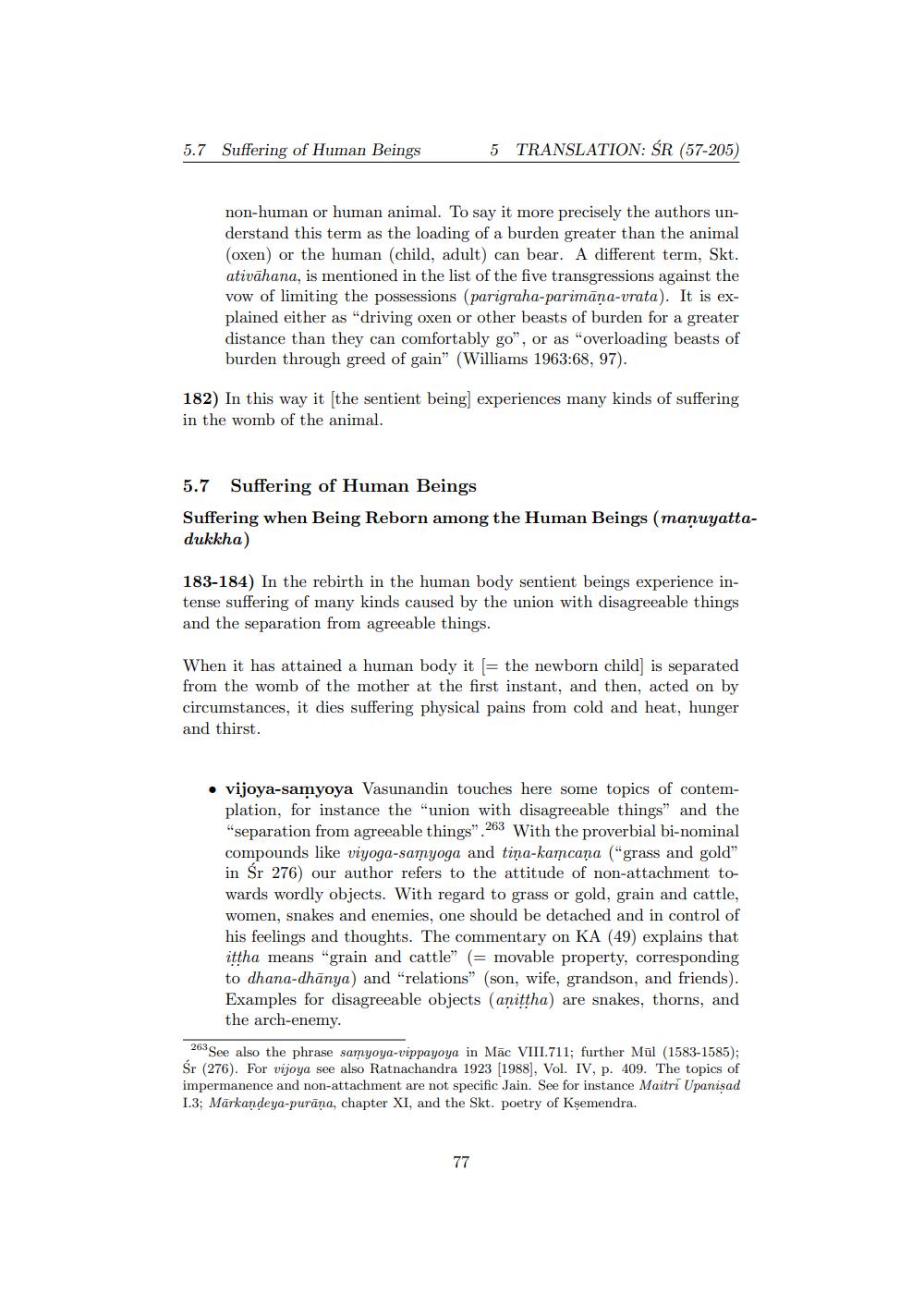________________
5.7 Suffering of Human Beings
5
TRANSLATION: SR (57-205)
non-human or human animal. To say it more precisely the authors understand this term as the loading of a burden greater than the animal (oxen) or the human (child, adult) can bear. A different term, Skt. ativāhana, is mentioned in the list of the five transgressions against the vow of limiting the possessions (parigraha-parimāņa-vrata). It is explained either as "driving oxen or other beasts of burden for a greater distance than they can comfortably go", or as "overloading beasts of burden through greed of gain" (Williams 1963:68, 97).
182) In this way it (the sentient being experiences many kinds of suffering in the womb of the animal.
5.7 Suffering of Human Beings Suffering when Being Reborn among the Human Beings (manuyattadukkha)
183-184) In the rebirth in the human body sentient beings experience intense suffering of many kinds caused by the union with disagreeable things and the separation from agreeable things.
When it has attained a human body it = the newborn child is separated from the womb of the mother at the first instant, and then, acted on by circumstances, it dies suffering physical pains from cold and heat, hunger and thirst.
• vijoya-samyoya Vasunandin touches here some topics of contem
plation, for instance the "union with disagreeable things" and the "separation from agreeable things" 263 With the proverbial bi-nominal compounds like viyoga-samyoga and tiņa-kamcaņa ("grass and gold" in Sr 276) our author refers to the attitude of non-attachment to wards wordly objects. With regard to grass or gold, grain and cattle, women, snakes and enemies, one should be detached and in control of his feelings and thoughts. The commentary on KA (49) explains that ittha means "grain and cattle" (= movable property, corresponding to dhana-dhānya) and "relations" (son, wife, grandson, and friends). Examples for disagreeable objects (anittha) are snakes, thorns, and
the arch-enemy. "See also the phrase samyoya-vippayoya in Māc VIII.711; further Mül (1583-1585): Śr (276). For vijoya see also Ratnachandra 1923 (1988), Vol. IV, p. 409. The topics of impermanence and non-attachment are not specific Jain. See for instance Maitri Upanisad 1.3; Markandeya-purāna, chapter XI, and the Skt. poetry of Kşemendra.




